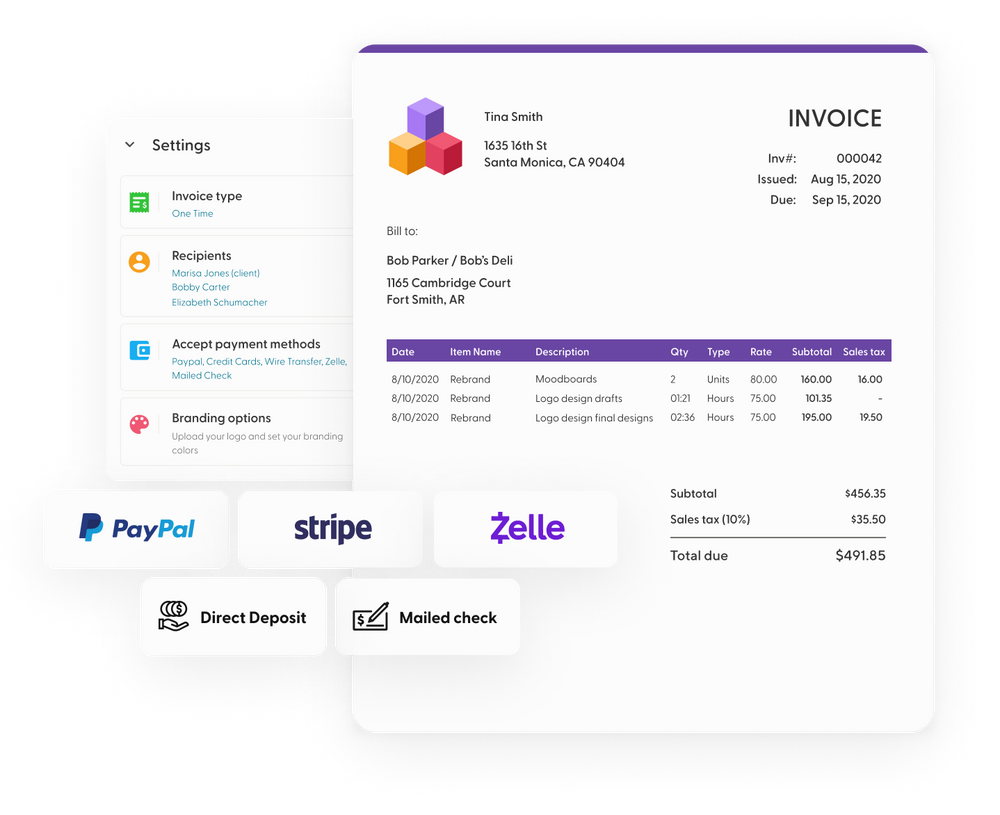Developer-client collaboration is often overlooked while working as a freelancer. In most cases, freelancers invest quite a sizable chunk of their energy in completing the job and bagging new clients. Although it is a great strategy that gets them success, a lot of potential is definitely lost due to inefficient collaboration with their clients.
In this article, we will explain how freelance web developers can collaborate well with their clients and get the most out of their career. Please subscribe to our blog and we will deliver these amazing tips straight to your inbox.
Before the work start
“Morning shows the day”, if you begin well, there is a significant chance that you will end well. It is quite challenging to recover from a poor start.
- Understand clients’ expectations: What is the issue they are facing, since how long, and what is it’s impact on their bottom line. These are the three questions that you need to start with. Ask questions in layman terms, request them to show their website problems visually. Next, ask what their vision of a solution is, they definitely have an idea on how the problem-less website would be like, ask just that.
- Background research on clients: The main reasons people become freelancers is a stress-free work life and a fat check. There are a lot of stories of “horrible clients” that you shouldn’t be the writer of. Maybe it was the clients’ fault, maybe it was due to collaboration. If you could find any information about your potential client or their business, it would be better. There is a reason most freelancers accept clients by referral only.
- Accepting limitations: Biting off more than you can chew is a terrible mistake. There is nothing wrong in saying “no” once you realize you will have to push yourself to the limit. No money is worth your mental peace. If your bandwidth is limited and you cannot pull the project off, taking it up will cause pain on both sides. Set your limitations first. Things that you can do, sizes of projects that you can pull off and the time required to complete a typical project. For example, if your clients want you to build a website with the content within a week, it will be pretty challenging if you are working alone.
- Inform your demands: Your availability, time you will need for completion, your hourly rates should be known to the client by the second meeting. The sooner they know, the sooner they can make a decision about hiring you. It will also save you a lot of time by giving your client a list of tangible requirements.
Setting the frame
As a freelancer, it would be difficult for you to operate in your clients’ frame and no client wants to operate in the frame set by the freelancer. The fact is no one wants to run in circles and it messes up the developer-client dynamic.
- Quality of the output: This is to be set by the client, as it is essentially their project and they will be writing you a cheque. However, it must be understood that you hold the power to either accept their threshold of quality. For example, designing a dynamic website alone and testing it is hectic. If the demanded quality is too high and the deadline is insufficient, you can (and should) state otherwise.
- Details of the process: You are the artist here and you must decide the process. During the call with your client, you should explain the steps of the web development process and what they should expect. Try to keep it as simple as possible. The best part is, there is room for little-to-no negotiation here. However, do explain what kind of updates your clients should expect with time and what kind of inputs you will need from them.
- The right amount of negotiation: The best part of working as a freelancer and with a freelancer is there is a lot of wiggle-room, comparatively. You should definitely push those boundaries to your benefit as much as you can. On the other side, try to be as accommodating as you can be for your client. But, set some non-negotiable ground rules and communicate with your client properly.
- Tangible deliverables: Earlier in this article, it has been touched upon a bit. Keep a checklist of the things that you can send over to your client on a periodic basis as you work on the project. For example, while working on a web application, you should start with sending them a mock-up, then slowly add content and functionalities. It is always a better idea to inform your client beforehand what they should expect.
Collaborating with clients
The sections above will help you set the outline for setting the foundation of your work with your client, but you definitely need to have a process set to communicate with your client on a daily basis.
- Frequency of meetings/calls: Every client, freelancer, project has their own requirements. Although having a baseline helps, it is one of the most important points to be set. For example, having a weekly update call is helpful, but that doesn’t include the review sessions. Also, the number of review calls varies based on the phase and nature of the project.
- Various tools: Earlier in this article, we have touched on how you need to make your clients familiar with your process. In general, you will need three tools for communicating with your clients, one for daily(quick) messaging, one for video calls, one for emails. All these tools serve different purposes. In some cases clients prefer different tools, so be flexible.
- Qualitative communication: Meetings can be replaced with video calls or emails, video calls or emails could be replaced with text messages. Always prefer the fastest and easiest way of communication in every step. It will help you, the freelancer, save your valuable time. Before every meeting/email/message, have the agenda, mention that at the top of the message for you to keep easy track of it.
Documentation
“I don’t need to write it down, I will remember it”, is the biggest lie I have repeatedly told myself all through school. Make a habit of documenting things diligently as you become a freelancer, because no matter what you think, you will forget it.
- Minutes of the meeting: Every time you get on a call with your client, take notes about what you had a conversation about. Share that document with them so that they can take a look at it too, because they forget things also. It will help you maintain a definitive progress report through the project.
- Bug report and iterations: As you start working on your clients’ web project, there will be bugs that you will be fixing after the first prototype. Keep track of all the bugs, issues, and iterations with the help of bug reports. What bug reports do is they help you reduce the chances of repeating a particular issue.
- Version files/folders: When you work on any kind of project, you will generate a lot of “version” files and more often than not they are poorly named. This makes it challenging to keep a proper track of the things that were tried and tested. For example, “testfile111” will not help you jog your memory, but “butterscotch theme test” will. Storing your files and folders properly will reduce your work in the future. Furthermore, you can always go back to a desired checkpoint immediately.
Best practices
No “how-to” article is complete without this section. Here are some best practices that you can adopt to take your developer-client collaboration and freelance career to the next level.
- Honesty and transparency: If you feel the need to deceive anyone, then you should put this on a hold. It will definitely backfire, maybe in bad reviews, mental stress or in some other way. Being absolutely transparent and brutally honest will give your career a great push. For example, when a freelance web developer comforts their client that they can pull off something, but can’t. It is an overall bad experience for everyone, especially you, the freelancer.
- Call out any discrepancies: Missed a payment date, a meeting was cancelled at the last minute, more things are added? Call them out. Being a good samaritan will not yield good results, not even in the short-term. Every time you feel the need to speak out something, bring it up, but bring it up professionally. “I understand your new requirements, but it also changes elements of our contract, could we discuss that?” is a simple example on how you should open conversation when things change mid-way.
- Communicate and negotiate: This one sounds like a “no brainer”, but negotiation is an area that not a lot of people excel at. While discussing what kind of solution is to be built for your client, always negotiate, especially when your client is inexperienced in your field. Focus on outcomes that will help them in building the solution that is best for their business and strategy. If you build a website that they need, rather than what they want, your clients will be more satisfied with your services.
Conclusion
This article focuses on two broad things, setting rules for yourself and being an efficient communicator, especially while communicating with your client. A freelance web developer can’t just rely on their technical expertise to land good clients and get paid a lot. The process that they build around their skill matters the most. The process primarily is how they interact with their clients, and how they act on the external information received.
Having specific and dedicated tools to work with are a good place to start. However, setting personal boundaries, non-negotiable rules, flow of work, and terms and conditions is equally important.



